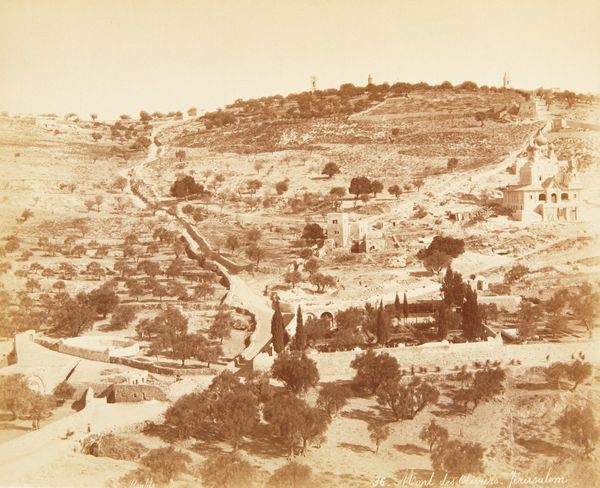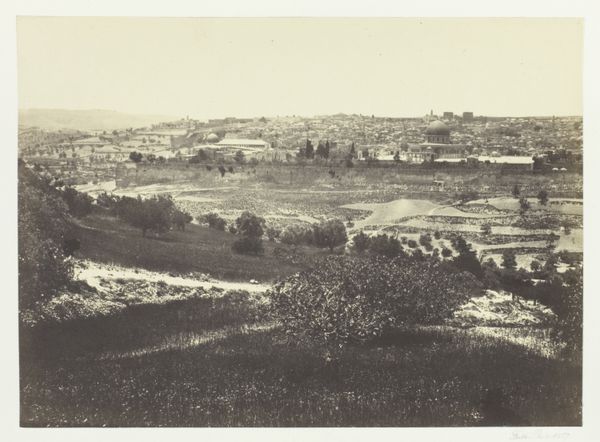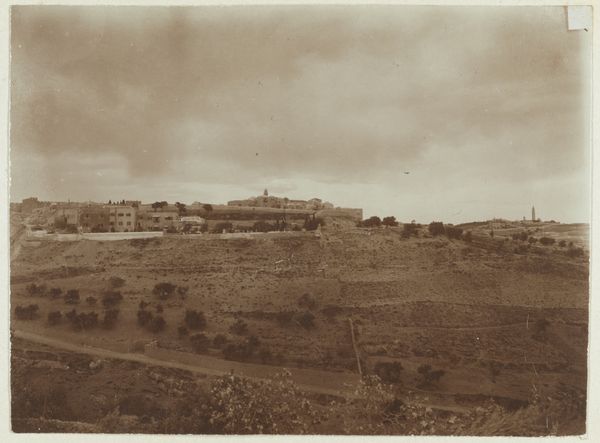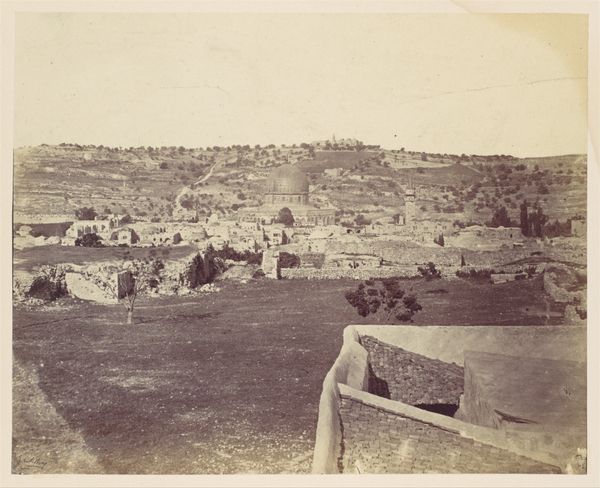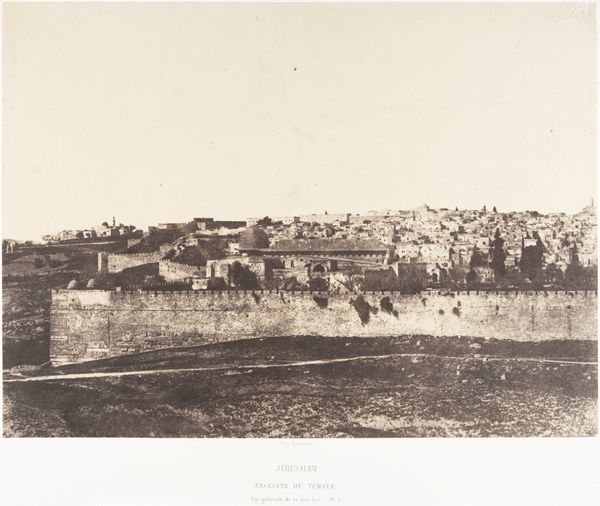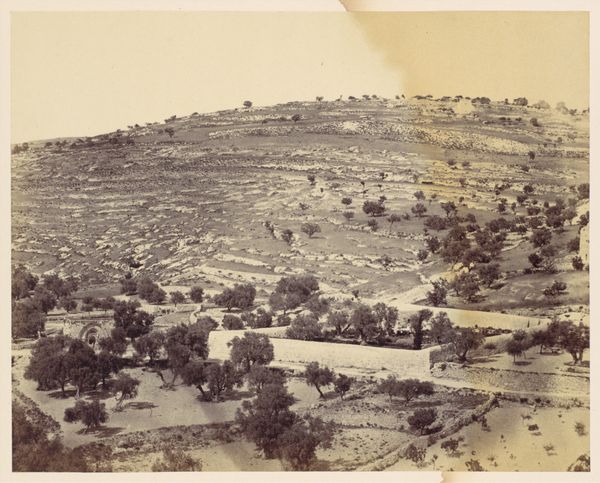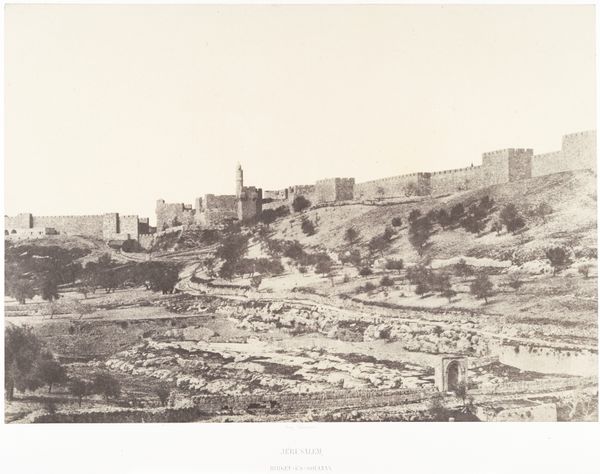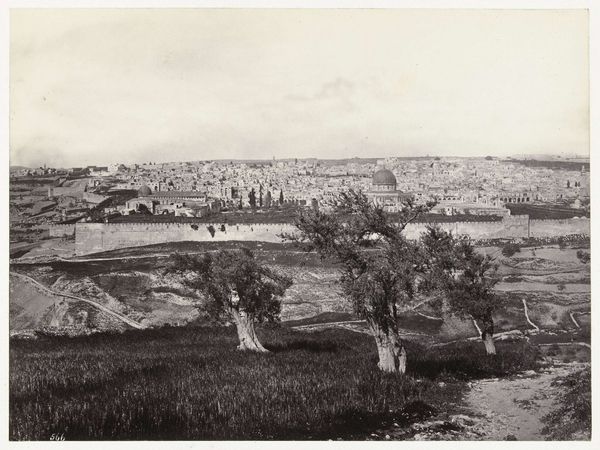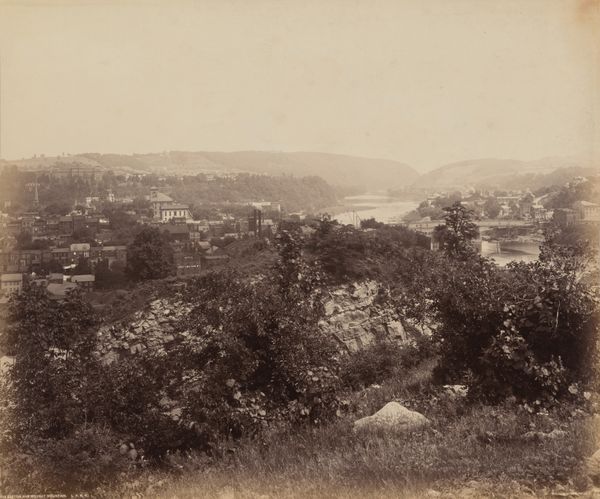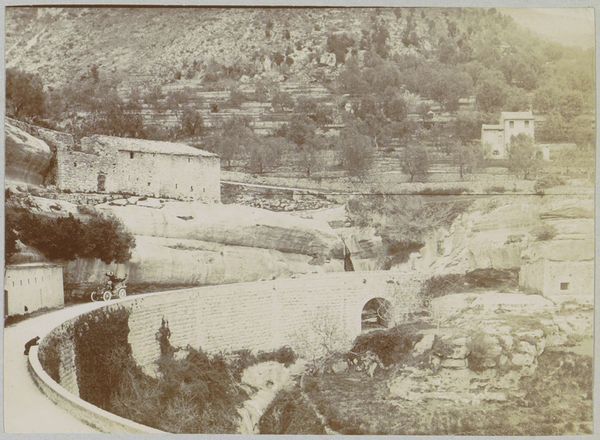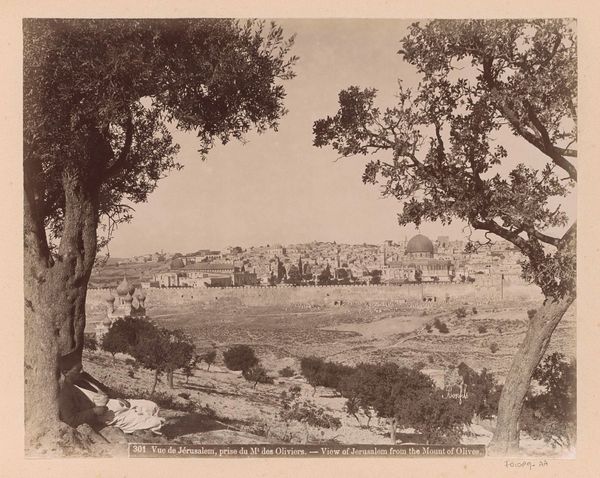
albumen-print, photography, albumen-print
#
albumen-print
#
landscape
#
photography
#
ancient-mediterranean
#
orientalism
#
cityscape
#
islamic-art
#
albumen-print
Dimensions: 8 9/16 x 11 3/16 in. (21.75 x 28.42 cm) (image)11 x 14 in. (27.94 x 35.56 cm) (mount)
Copyright: Public Domain
Editor: This is Félix Bonfils' "Jerusalem du Mont des Oliviers," an albumen print from the 1870s. I'm immediately struck by how this almost sepia-toned image makes the ancient city seem both present and impossibly distant. What social dynamics were at play when it comes to landscape photography? Curator: That’s a great starting point. The popularity of albumen prints, like this one, coincided with increased European interest in the Middle East. Consider the power dynamics: European photographers capturing "exotic" landscapes and cultures for a Western audience. This image participates in a visual language of Orientalism, framing Jerusalem as a timeless, almost biblical place. Who was really seeing whom through this photographic lens? Editor: So it’s less a neutral depiction and more of a curated…performance? The placement of the tree on the right feels deliberate. Curator: Absolutely. Note the strategic framing. The rugged terrain and the large tree in the foreground create a picturesque scene, almost staged. This visual organization appeals to Western aesthetic sensibilities, influencing how viewers perceived and understood Jerusalem. How do you think this impacts our understanding of Jerusalem beyond tourism? Editor: It presents a romanticized and, perhaps, simplified view. The complex political and social realities of the time are kind of erased. I'm guessing a photo of the city taken by someone living there might tell a very different story? Curator: Precisely. The historical context and the photographer’s position are crucial for a nuanced understanding. This photograph, while beautiful, also tells a story about power, representation, and the construction of cultural narratives. Editor: I see it so differently now! I came expecting a straightforward landscape, but it's a visual argument, subtly pushing a specific viewpoint. Curator: Indeed. Analyzing images within their historical and cultural context reveals the layers of meaning embedded within. It enriches our appreciation, and also sharpens our critical thinking.
Comments
No comments
Be the first to comment and join the conversation on the ultimate creative platform.

